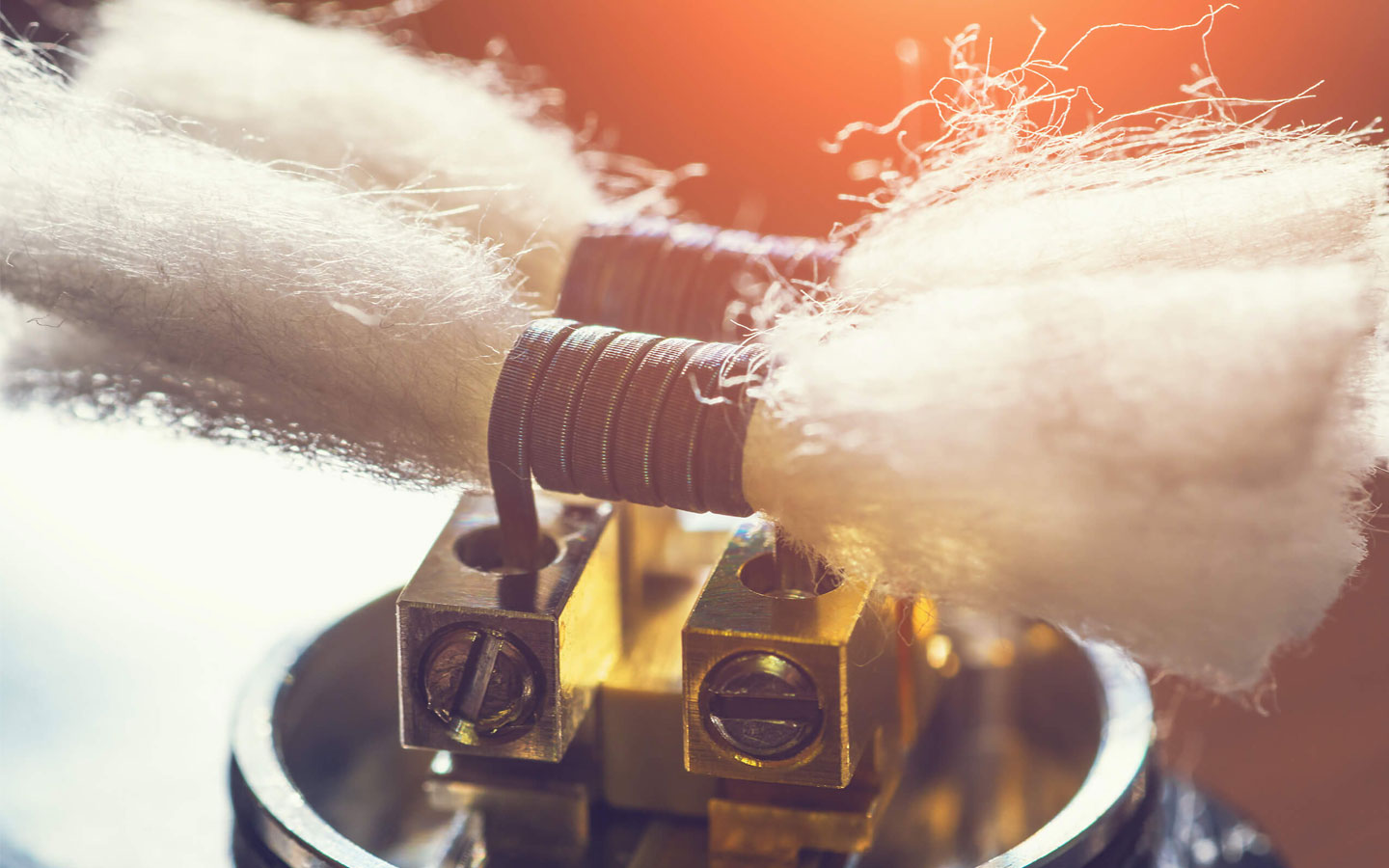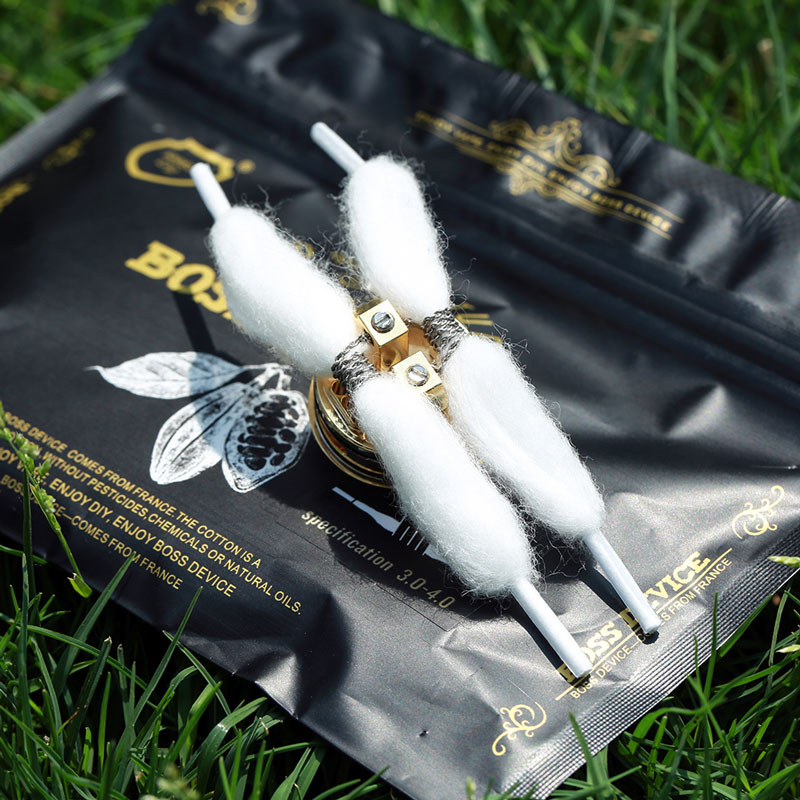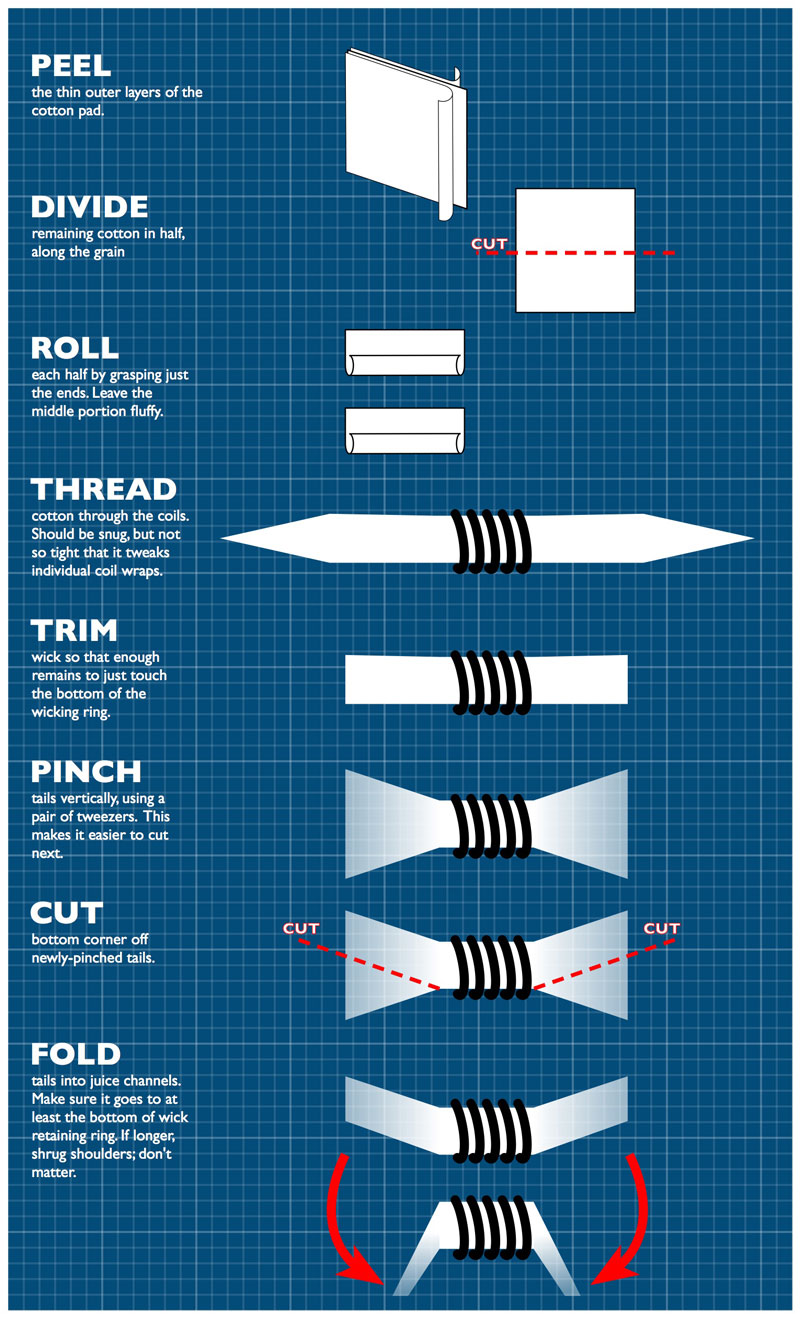
Cotton wicking is an indispensable step in the vaping process, and is also a topic that is often discussed by builders in particular and vapers in general. Why is that? Because the difficulty in this step is how to get the best flavor and experience.
In this article, let's find out what vape cotton is, what is the best cotton wick and why it is so important .
I. Common concepts about cotton wick
1. What is vape cotton?
As we know, vape cotton is used for vaping, but what is the difference between vape cotton and other types of cotton?
In terms of material, vape cotton is also made from organic fibers, the difference of this type of cotton lies in the processing method. Instead of being interwoven, overlapping each other to absorb and prevent liquid from flowing out, the vape cotton fibers are stretched, straight and bundled together like a lamp wick to absorb and conduct essential oils. In addition, the cotton used for vaping is not bleached or dipped in solvents to remove impurities. It can be said that vape cotton is the "purest" cotton you have.
Some of the prominent cotton types that are popular with vapers include Boss Device cotton, BP Mods Pro Vape Cotton , Advken Doctor Coil ,...

Boss Device cotton, one of the most popular cotton types in 2022
2. What is cotton wick?
First of all, cotton wicking means making cotton for the atomizer. The word “wicking” in English means “conduction”, cotton wicking for vape is understood as using conductive material (can be cotton, mesh or silica wick) to bring vape essential oil to the coil (feeding), serving the vaporizing process. It looks simple, but every factor in the cotton wicking stage has a significant impact on the vape vapor. The shape, thickness, fluffiness, and quality of the cotton all contribute to the final flavor you feel when vaping.
The two most important things to keep in mind when wicking cotton are the thickness and fluffiness of the cotton. For example, with the same vape head, the same type of e-liquid, the same type of coil, but with two different types of thick or thin cotton, your experience will be completely different.
3. What is dry hit? How to fix dry hit?
“If you’ve never had a dry hit, you’ve never owned a vape.” This is a common joke among vapers and builders.
Dry hit is simply a burnt cotton - a funny and scary phenomenon that any vaper has experienced. It is one of the "imperfections" of vaping, because this is a small accident and not a regular phenomenon.

Dry hit, an "imperfect" thing about vaping
Dry hits occur when the cotton's juice delivery speed is too slow compared to the coil's vaporization speed. Cotton that does not have enough solvent to cool down will reach too high a temperature and produce sulfur gas, making the user feel spicy, burnt and extremely sore throat. "The higher the coil temperature, the faster the cotton's juice delivery speed must be" - understanding this theorem will help you avoid many dry hits, which is also the first and most important step of "wicking cotton", which is to wick a piece of cotton that is delicious and stable.
II. How to wick cotton
1. Cotton Wick for RDA
If we talk about the technique and difficulty of cotton wicking, we should probably start with RDA.
The nature ofRDA is a product line that is very easy to get used to for technically curious vapers, due to its very straightforward and as open as possible working principle in terms of fine-tuning: the build chamber is spacious and comfortable, not limited by cotton wells or coil chambers, the juice absorption mechanism is solved by the method of dripping directly onto the cotton surface (familiarly called "juice tra"), from which we see that for RDA, there is no longer any concern about thickness or juice conduction ability, only the only problem left: what kind of cotton to use for good taste?
2. Cotton Wick for RTA
More difficult is the cotton wick for RTA . If the RDA only has the deck build and the top cap on top, the RTA is much more complicated, the number of components of an RTA is often double or even triple that of an RDA. That is why the technical requirements for this product line must be much higher.
Assuming you have mastered wicking cotton for RDA and have a firm grasp of the amount of cotton needed, the next thing you need to learn is how to get the juice from the tank to flow sufficiently and stably through the coil. Most current RTA lines conduct juice by pressure, so to balance the pressure between the heating chamber and the juice tank, we need to pay attention to the cotton feet and air holes when making cotton.
If the cotton foot is too short or too thin, the juice will pour into the combustion chamber, leading to flooding and leaking essential oils through the air holes. You will immediately feel if the cotton is too thin because after just a few puffs, there will be the sound of the filter covering the essential oil blocking the air holes. On the contrary, if the cotton foot is too long or too thick, completely blocking the juice hole (the gap from the combustion chamber to the storage chamber), it will also cause a loss of pressure and the juice cannot penetrate the cotton, leading to a dry hit. To overcome this, vapers will use a stick (usually the jig coil itself) to create an air hole next to or in the middle of the cotton foot.
3. Super delicious cotton wicking methods
Trimming the foot of the cotton is one of the easiest ways to control the juice flow of the cotton. You will need a pair of pointed tweezers and brush the foot of the cotton to remove the fibers that are not aligned properly, allowing the juice to flow more evenly inside the cotton.
There is also a special cotton wicking technique called “scottish wicking”. Basically, you will take a “slice” of cotton as thin as possible, then continue to spread that cotton until it is easy to see through, then roll it up to create a hollow part at the core. This technique helps the atomizer regulate pressure better while also delivering juice quickly, holding more juice while using about 10% less cotton. Less cotton also means less juice trapped between the cotton fibers and as a result, less juice is damaged due to too much heat exposure without vaporization, helping to increase the life of the cotton.

Scottish Wich, one of the best ways to wick cotton
Fact: This is also the wicking method that is widely used by The Vape Club technicians. Most vapers will not use this method because it is time-consuming and mainly because the popular vape cottons today are in the form of "sticks", it is impossible to take out a thin slice of cotton. However, if you have cotton in the form of thin pieces pressed together, you can absolutely try it and feel the difference in each puff (or visit TVC and order a Scottish wicking service right away).
III. The most reputable and free cotton wick address in Hanoi and Ho Chi Minh City
Wicking cotton is probably the hardest part of vaping. Although it sounds like a lot to learn, especially wicking cotton for RTA, once you figure out how to wick well and memorize it, you will never forget it. Master wicking cotton first, the other issues can be learned easily if you wick well.
If you don’t know where to start, you can absolutely go to the nearest The Vape Club and request free cotton wicks, while waiting, observing and asking TVC technicians. Wishing all vapers always have delicious vapes and never have to worry about problems related to coil cotton… and of course it will be even better if you trust the customer service experience of The Vape Club in general and our technicians in particular.

















